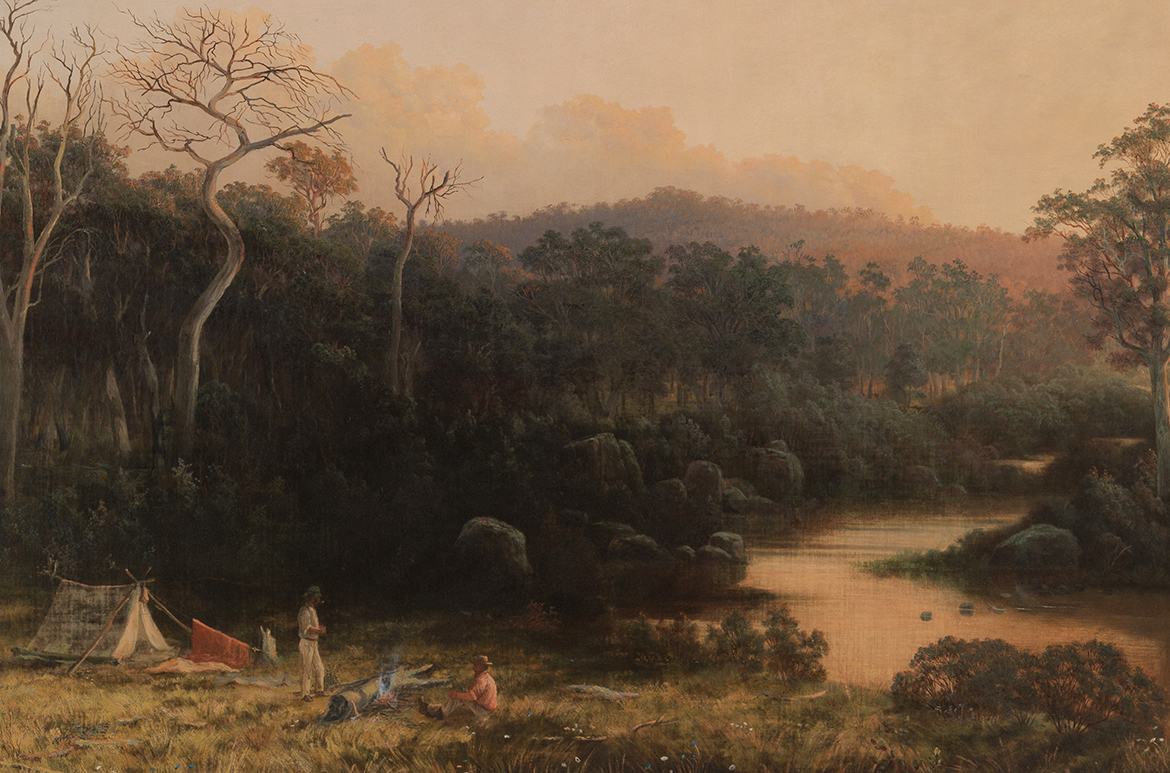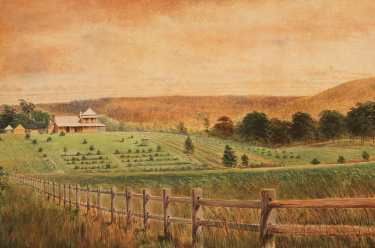Offering an alternative to Australia’s traditional sun-soaked image, Henry Rielly’s painting Ghost Gully evening 1894 (illustrated) suggests a somewhat melancholy sentiment, with a group of three dead trees in the middle ground and two lone Bushmen setting up camp as the darkening shadows of evening descend.
The scene is set at Ghost Gully, a small watercourse adjoining Whiskey Gully, the site of an old hotel south of Stanthorpe, 170 km southeast of Brisbane, Queensland. Folklore relates that Ghost Gully was so-called after miners who imbibed too freely at the Whiskey Gully hotel and then experienced the ‘DTs’ (delirium tremens) caused by alcohol withdrawal, which could bring on hallucinations. Perhaps these two campers settling in for a rather long night on the banks of the gully were among those afflicted.
Henry Rielly ‘Ghost Gully evening’
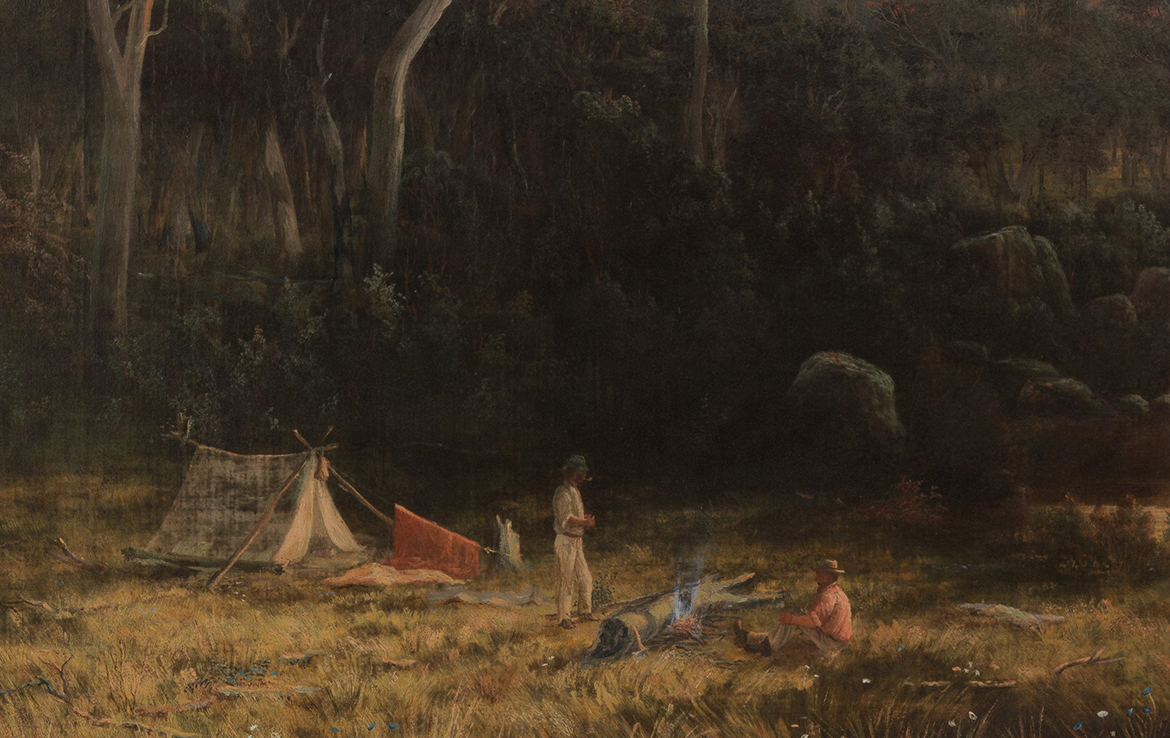
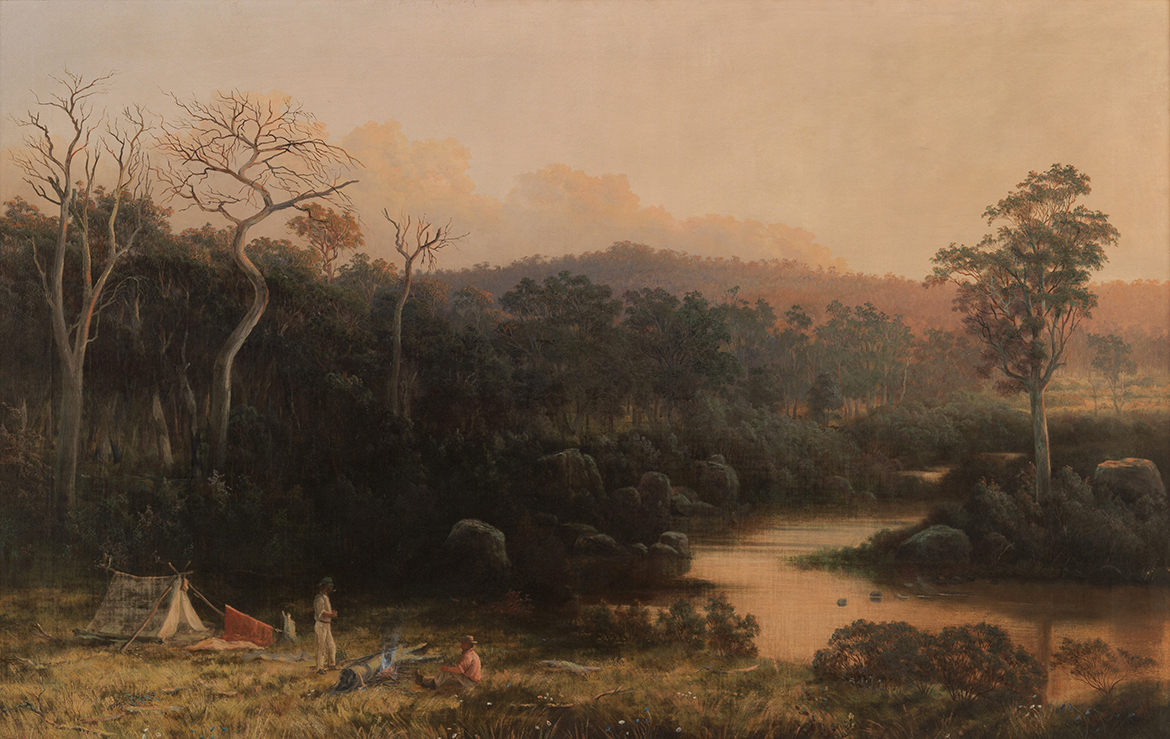
Countryside around Stanthorpe
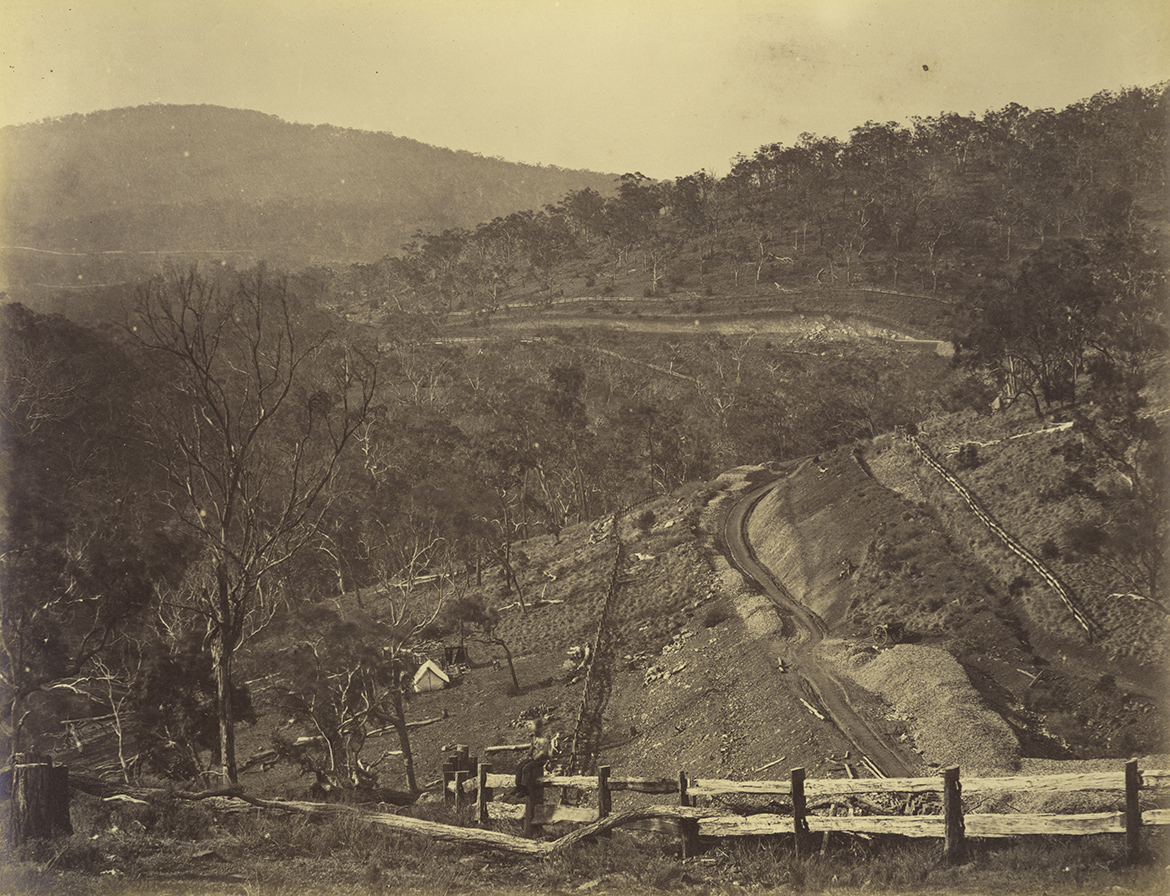
Henry Rielly
Henry Rielly was born in Clerkenwell, London, in 1845, and migrated to Victoria with his family at age seven, but nothing is known of his early training or experience.
Both Rielly’s sisters married men connected with the tin mining industry, Louisa married Oliver Dyson Aplin in 1871 and moved to Stanthorpe around that time, Aplin established the Severn River Tin Mining Company which was one of the earliest and longest running mining ventures in the Stanthorpe area, the township of Glen Aplin is named after him. His younger sister Isabella moved to Stanthorpe around 1884 and he probably traveled with her to Queensland.
DELVE DEEPER: The history of the Queensland Art Gallery
Rielly established his reputation in Victoria where he was a founding member of the Victorian Academy of Arts in 1870, exhibiting at the Academy and on its Council from 1875-84 before moving north. The Queensland Art Society was formed in 1887 and Rielly exhibited with the Society and acted as a Council member in 1894. He exhibited Ghost Gully evening at the Society the year it was executed and it is clear Rielly thought highly of the painting as he presented it to the fledgling Queensland (National) Art Gallery.
Stanthorpe (Tintown)
Stanthorpe, some 200km southwest of Brisbane, is located in the Southern Downs, the centre of the Granite Belt, a region of spectacular geologic formations. Tin was first discovered along watercourses, streams and creeks in the area in 1852, and by the 1870s saw a great rush to mine alluvial tin at Quart Pot Creek, now known as Stanthorpe (Tintown), named after the Latin word for tin (Stannum). At one time the area claimed to be the most successful tin mining field in Queensland, as tin was in plentiful supply from the granite outcrops from which it originates.
Washing tin in the mines at Stanthorpe
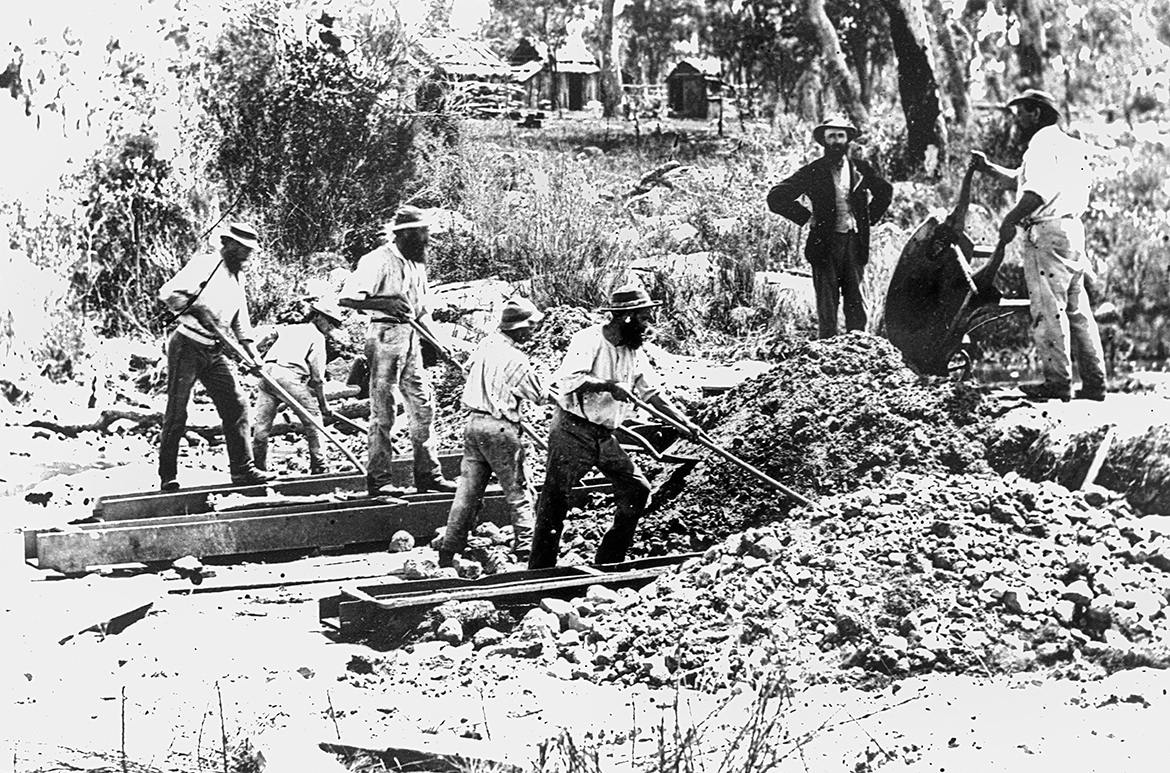
Miners working a tin mine, Stanthorpe

Mining tin in Stanthorpe
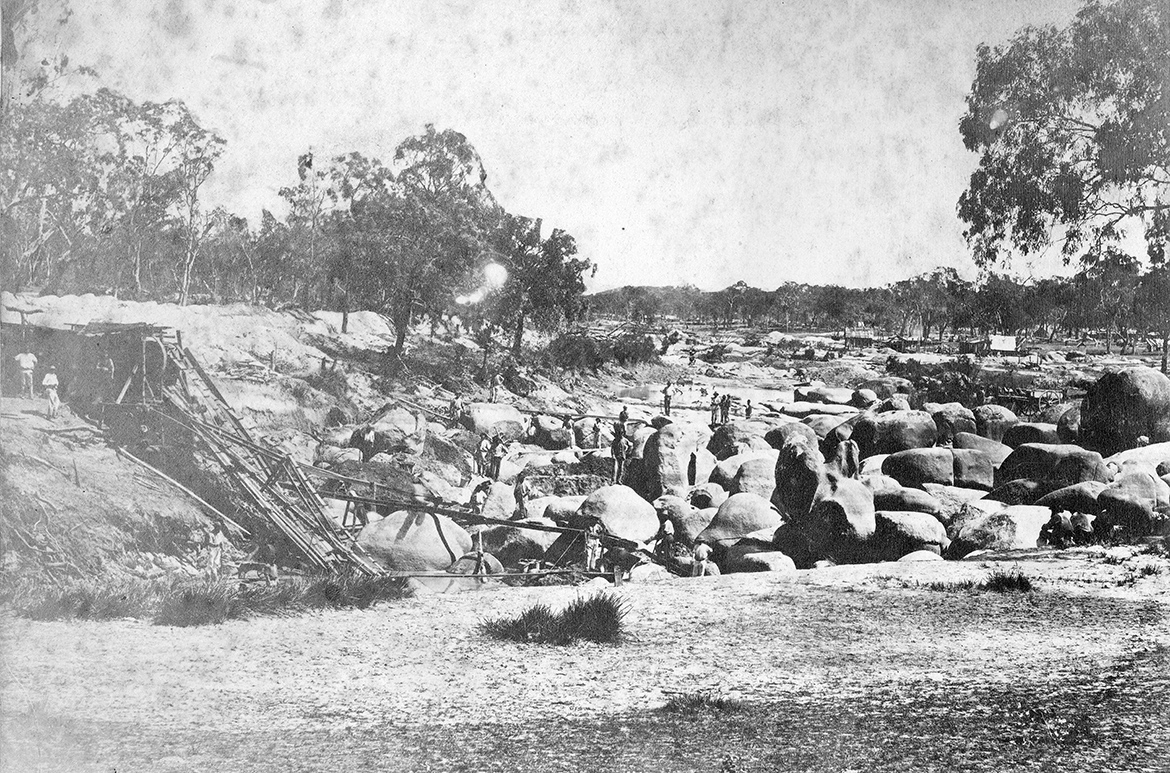
Curatorial extracts, research and supplementary material compiled by Elliott Murray, Senior Digital Marketing Officer, QAGOMA
#QAGOMA
